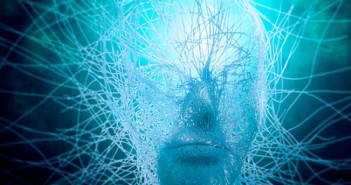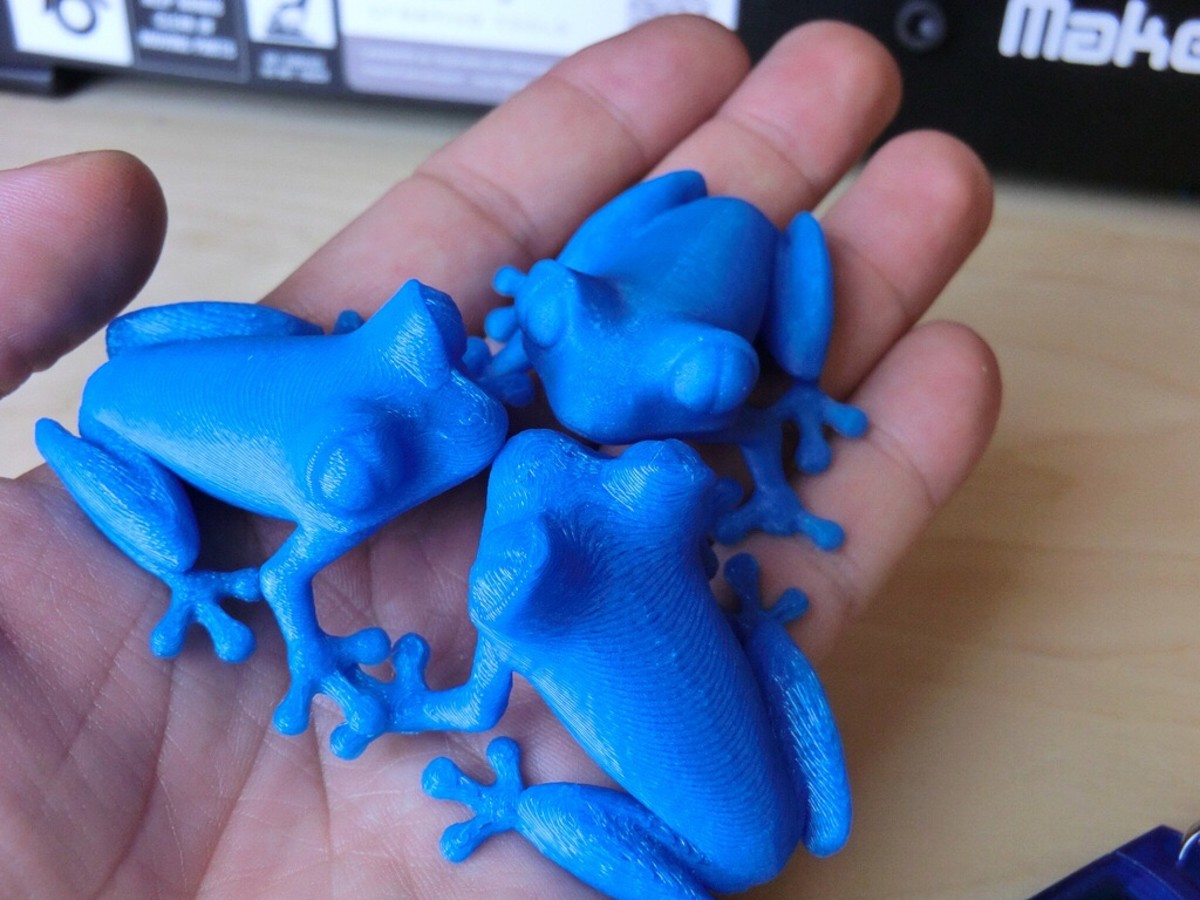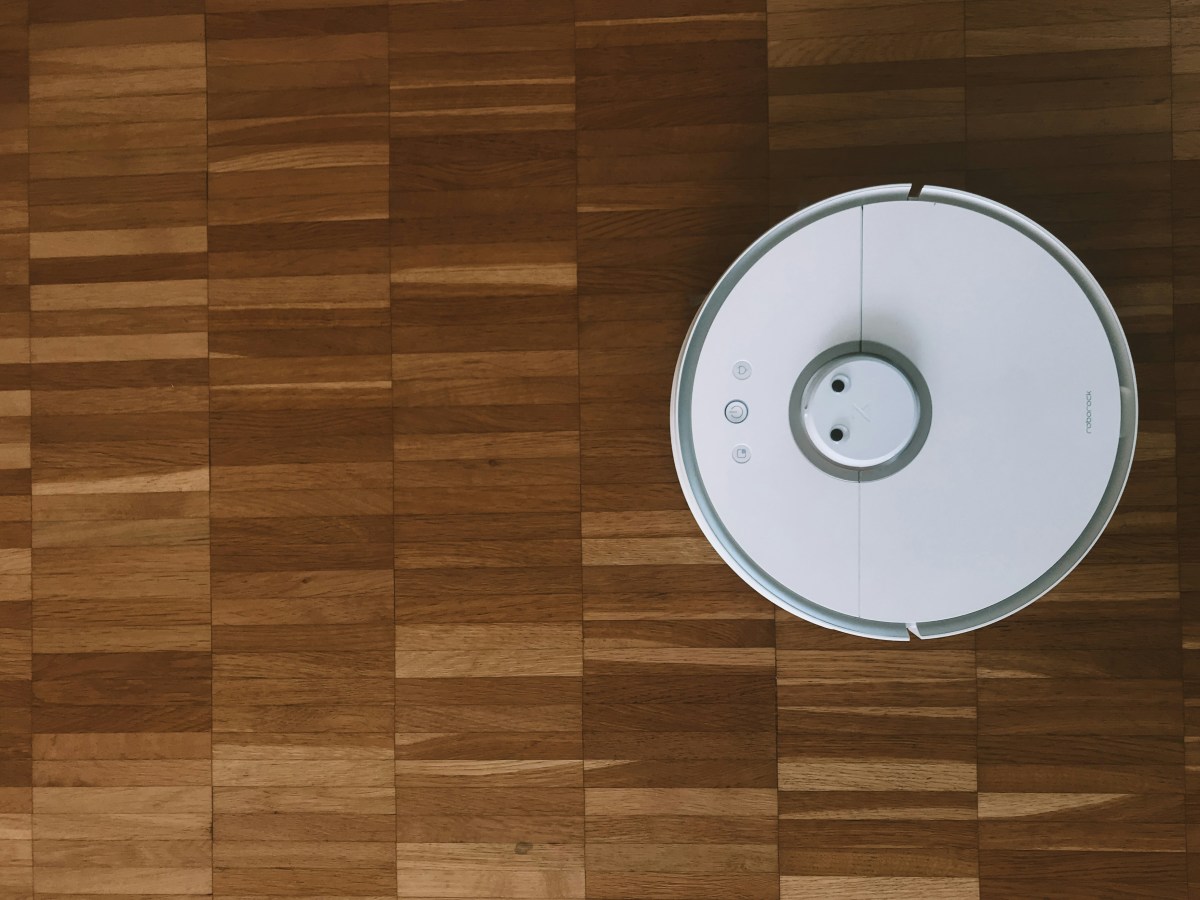Technology Trends Shaping Civilization for the next 25 to 50 Years
Incredible advances are occurring in the fields of Machine Learning, Renewable Energy, Digitization of Matter, Nanotechnology, and Biotechnology. All of these technologies contribute to a sort of “flywheel momentum” where advances in one area yields advances in another moving the flywheel faster and faster. Will these shifts create chaos and crisis, or will they move civilization toward a life at its best and highest purpose?

Summary
Advances in Machine Learning, Renewable Energy, 3D-Printing, Nanotechnology, and Biotechnology are happening at a staggering rate. I believe these technologies, like computer technology, abide by Moore’s Law (where advances double each year). As these technologies mature, how might we harness them and what are the consequences? This monograph will provide an overview of each technology and their trajectory for civilization.
Machine Learning
The 6th Technology Revolution
In the 1950s, John von Neumann used the term “Technological Singularity” to describe a time when machines become more intelligent than humans resulting in a profound expansion of civilization. When the technological singularity occurs, the superintelligent computer is the last invention that humans will make as described by Irving Good in 1965. This “Singularity” is in a sense analogous to passing over the event horizon into a black hole – here the event horizon is where the forces of computer intelligence leave no room for human interventions.
Humans simplify until we find order. This is how we understand the universe, even if the universe is governed by rules beyond human understanding. Computing machines do not have such constraints. Machine Learning will utilize complex streams of big data, mapping patterns , and conclusions that may not make sense to human beings. The key difference is that a human can explain how they arrive at their conclusion, while a machine cannot. This called deep learning’s “black box” problem.
Today, IBM has “Watson”, which is an artificial intelligence system that can answer questions posed in natural language and has the ability to learn by “reading” 800 million pages per minute. Watson has proven its capabilities by learning from a library of oncology papers and assisting doctors in their diagnosis and treatment options for cancer. In a very short period of time, Watson went from learning to read at a first-grade level to comprehending complex MRI images and genomic sequencing. Watson understands the domains of health/medicine, education, legal research, weather forecasting, and tax preparation. Experts for a given domain can further train Watson using the Watson Knowledge studio.
Watson is just one example of machine learning. Many other companies such as Google, Microsoft, Facebook, Amazon, and Elon Musk’s OpenAI are all investing heavily into the advancement of cognitive computing.
Over the next 25 years, Machine Learning will slowly shape society in the following ways:
Optimizing Financial Markets
Today, 86% of all market transactions are in the category of quantitative high-frequency trades (HFT) where trading decisions are made using a computer algorithm. The efficient market hypothesis (EMH) is an investment theory that states it is impossible to "beat the market" because stock market efficiency causes existing share prices to always incorporate and reflect all relevant information. However, the markets are full of inefficiencies and it has always been impossible for them to reflect ALL relevant information. Such inefficiencies allow companies in the financial sector to make profits by beating the market. The “Alpha Ratio” of a market represents the investor’s influence on the market due to such inefficiencies.
Machine Learning within quantitative high-frequency trading is the great market equalizer. Machine learning will take more of the relevant information than ever before into consideration for each trade. As this occurs at a very high frequency, the Alpha ratio will tend towards zero and it will be nearly impossible to beat the market. Most investors that trade securities (stocks in particular) do so because they believe that the securities they are buying are worth more than the price that they are paying, while securities that they are selling are worth less than the selling price. But according to EMH, if markets are efficient and current prices fully reflect all information, then trading securities to outperform the market will be nothing more than a game of chance. Thus, investors might do as well betting at the horse tracks as investing in an efficient market where prices reflect intrinsic value.
The market’s main function will then be to reflect true prices, rather than generating profit. This advancement will ensure long term market stability and the elimination of market “bubbles”.
When the Alpha Ratio persists at zero, a “Financial Singularity” occurs where the market is perfectly efficient and it is impossible to achieve an above average return. Prosperity will come from participation in the markets(i.e. Index funds), rather than futile efforts of trying to outwit the market.
Many professions within the financial sector will be transformed with significant enhancements via machine learning and artificial intelligence. Some of these areas include: underwriting, fraud protection, risk management, compliance (fighting financial crime), customer service, portfolio advising, and anti-money laundering.
Perhaps the most foundational and emergent technology for the banking industry is the “blockchain”, where universal digital wallets replace banks and blockchains allow frictionless and immediate funds transfer between parties without an intermediary. Blockchains can be thought of as an automatically notarized ledger. Blockchains have now been abstracted and coupled with artificial intelligence to radically alter the following intermediary services: electronic payment systems; voting; music streaming; smart contracts; supply chain management; academic records; medical records; criminal records; facilitating crowd sales/crowd funding; prediction markets; settlement systems; stock trading; energy; and gun tracking.
Generally and historically, technology creates wealth for the masses and will do so exponentially in the 6th technology revolution. Advancements in technology will diminish poverty and raise the standard of living for all.
Expanding the Economy and Restructuring Labor Markets
Along with market stability, machine learning will coincide with accelerated economic growth. Similar to creating efficiencies in the financial markets, most organizations will also experience incredible efficiencies where machines can replace humans for predictable, repetitive tasks. While some would believe that this would cause a chasm between the “haves” and “have nots”, history indicates that technology advancements improve the standard of living for everyone. In the short term, society’s aversion to a loss of jobs will be greater than the expectation of an improved standard of living. (Yes, even the buggy whip laborers found better jobs and gained better lives). This has held true for all previous technology revolutions and will continue. Machine learning will accelerate the approaching “Second Digital Economy”. (or neural system for the economy). The second digital economy will remove inefficiencies in the economy and produce wealth; fairly distributing that wealth will be a function of a healthy economic system at work.
“Perhaps some new part of the economy will come forward and generate a whole new set of jobs. Perhaps we will have short workweeks and long vacations so there will be more jobs to go around. Perhaps we will have to subsidize job creation. Perhaps the very idea of a job and of being productive will change over the next two or three decades. The problem is by no means insoluble. The good news is that if we do solve it we may, at last, have the freedom to invest our energies in creative acts. This second economy that is silently forming—vast, interconnected, and highly productive—is creating for us a new economic world. How we will fare in this world, how we will adapt to it, how we will profit from it and share its benefits, is very much up to us.”
-
Efficiencies will lower the cost of goods and the cost of living for all.
-
Technological unemployment will go hand in hand with an equally dramatic reduction in the need for people to earn money. The inevitable wealth of the future society will be distributed.
-
The list of jobs that will be replaced due to machine learning over the next 25 years covers a broad spectrum. Some of them include: factory workers, actuaries, accountants, pharmacists, lawyers, drivers, pilots, store clerks, soldiers, rescuers, reporters, farmers, housekeeper, chef, surgeons, journalists, customer service agents, librarian, and teachers.
-
Human creativity becomes the most important and abundant resource of all. This cannot be replicated with machine learning. Music, entertainment, art, design, architecture,
Utilizing Highly Effective Education and Research methods
Machine Learning will have a dramatic influence on education and research.
“One novel approach is called NeuroTutor, which measures the brain activity of the student and accurately monitors the mental state. Using this information, markers for cognitive load, frustration level, or fatigue, NeuroTutor adapts its teaching strategy to match the mental state of the student. When studying math, novel concepts are explained and introduced only if the student is susceptive to this content. Thus, NeuroTutor may wait until the student is highly concentrated, yielding an individualized and improved learning progress for each student.”
Optimizing competency-based, adaptive, and personalized learning will create disruption in traditional education systems as follows:
-
The “fall” of traditional lectures will give “rise” to the next-generation learning space.
-
An artificial intelligence system will “learn” each student in depth. The systems will learn interests, depth of knowledge, and most effective teaching approaches. Most importantly, this “mentor” will stay with the student for a lifetime. The artificial mentor will know every assessable artifact ever created by a student.
-
Today, IBM’s Watson serves as a digital tutor. It will assess a student's work and provide them with hints, explanations, feedback, identify misunderstandings, and guide the student at their pace until mastery is achieved.
-
Essays can be automatically graded with feedback that strengthens the individual learner.
-
“Spaced Interval Learning” will be used over the span of a curriculum to know when a lesson has to be repeated for a particular learner in order to optimize learning.
-
Machine learning along with personalized learning will automatically curate and create custom textbooks and resources designed for a specific learner. Content Technologies, Inc. has made significant strides towards this vision.
-
Machine Learning networks will have an understanding of the fluid and long-term demands in the labor market along with the skills/competencies required to be successful. Students will be able to more accurately match occupations with their interests and gifts. Artificial Intelligence will then create a personalized, competency-based curriculum to prepare the student using immersive learning experiences.
Acceleration of Research
-
As intelligent computers take on more responsibility in managing the discovery process, the science community will have more time to devote to knowledge creation.
-
As intelligent computers learn to better navigate the subtleties of language, they can be immersed in science literature and provide researchers with new observations.
-
Research will likely be “crowd sourced” where research communities will efficiently collaborate and contribute toward the creation of knowledge. Machine learning will facilitate such collaboration by connecting individuals doing similar work, where they would not have otherwise been aware.
-
Natural language understanding and translation will allow scholars to effectively communicate with each other in real-time with different languages.
-
A neural network may be “trained” with unbiased, very large sets of data to reach a point where it can comprehend literature in a domain of research. (i.e. IBM’s Watson). The neural network can then consume vast amounts of relevant research findings, papers, etc… to assist ongoing research activities. Such neural networks have already led to several breakthroughs in oncology research.
Renewable Energy and related advances
Civilization depends on energy. Nations compete for resources that produce energy and the GDP of every nation has a direct positive correlation to the use of energy. In other words, the more energy a nation uses, the more prosperous it will be.
Solar Power will Prevail
The International Energy Agency (IEA) reports that solar power may contribute over a third of the world’s energy supply by the year 2060. The Sun provides an abundant source of energy, assuming that the atmosphere is clear enough to collect it. Today, most of the solar construction projects power to utilities. In the near future, solar panels will be affordable and thus available to a wide range of individuals, families, and companies. The IEA report estimates that $2.2 trillion of the $3.7 trillion that will be spent on solar panels will target homeowners and small businesses.
Beaming Power Over Long Distances
In 1901 Nikola Tesla was determined to create a global system of wireless electricity using the innovative Wardenclyffe, NY powe rstation concept. While Tesla’s vision was defunded by J.P. Morgan in favor of Thomas Edison’s approach, his theories have been advanced. Today, the ability to wirelessly power and charge devices within a room has been demonstrated via uBeam and WiTricity. For long distance, it is possible to convert power to subsonic sound waves transmitted to a receiver that will re-convert the waves back to power. The Japanese have embarked on a 25-year roadmap to build orbital solar farms and precisely beam down the power to a receiving station. These advances may provide a means to shift away from energy grids and associated power cables within national infrastructures. These changes simplify the overall energy infrastructure while reducing risks of national or global outages.
Israel is testing roads that will wirelessly charge electric vehicles. Below is a list of applications that would benefit from wireless power transfer (WPT).
-
Internet of Things
-
Electric Vehicles
-
Electric Drones
-
Mobile and stationary communications systems
-
Medical device implants
-
Power Tools
-
Homes - elimination of outlets using WPT repeaters in walls, furniture, and floors
-
Eliminating power over copper wiring will greatly reduce the chances of structural explosions and fires.
Pervasive Energy Storage Systems
The U.S. is now in a position to lead an emerging $450 billion global market in advanced energy storage manufacturing. Energy storage systems (eg. high capacity batteries) for vehicles, homes, and industry has already emerged as a significant global industry, potentially disrupting utilities, automotive, and mobile technology industries.
“More than 500,000 Americans and rising are already driving electric and hybrid vehicles, accounting for more than 30% of global demand. Surging US markets for ‘stationary’ storage that make the grid more flexible, efficient, and resilient spurred 256% growth in system deployments - with more installed in just the last quarter of 2015 than the previous two years combined.”
In the next 25 years, our current energy grid will be replaced by affordable, stand-alone renewable energy systems. The energy industry will be gradually disrupted away from public utilities using fossil fuels and nuclear energy. Highly efficient manufacturers (using AI and robotics) of solar power and stationary energy systems will provide every family and business their necessary standalone power.
A new battery that lasts forever was developed using nanotechnology. Companies are currently developing batteries using nanomaterials. These batteries have the potential to last decades of use and can recharge faster than conventional batteries.
Nuclear Fusion will Power Energy-Intensive Applications
Lockheed Martin is very close to creating the first compact fusion reactor. They describe fusion as “... the process by which a gas is heated up and separated into its ions and electrons. When the ions get hot enough, they can overcome their mutual repulsion and collide, fusing together. When this happens, they release a lot of energy – about one million times more powerful than a chemical reaction and 3-4 times more powerful than a fission reaction.”
To create plasma energy (similar to the sun) and control it, Lockheed Martin is developing a way that massive amounts of energy can be contained using a magnetic bottle (a tokamak). A tokamak can stabilize temperatures reaching hundreds of millions of degrees. With such containment, the energy can be released in a controlled fashion that can be used. Fusion reactions use the most abundant atom in the universe, hydrogen, and could power the planet for millions of years.
The types of applications that will emerge from this type of compact power include:
-
Infinite supply of power to the planet
-
High Speed Space Propulsion and Travel. Mars will be reachable in 1 month (as opposed to 6 months).
-
Medical Isotopes for diagnosing cancers and other diseases
-
Neuron beams can scan for dangerous materials
-
Destruction of long-lived radio isotopes (ie. nuclear waste)
-
Use the heat to desalinate seawater
-
Advancement of Plasma Science (antimatter research, nanoparticles, and nanocrystals, advanced materials, )
Digitization of Matter (beyond 3D printing)
“3D printing -- also known as additive manufacturing -- turns digital 3D models into solid objects by building them up in layers. The technology was first invented in the 1980s, and since that time has been used for rapid prototyping (RP). However, in the last few years, 3D printing has additionally started to evolve into a next-generation manufacturing technology that has the potential to allow the local, on-demand production of final products or parts thereof.”
In the next decade or so into the future a major paradigm shift will occur in 3D printing. On computer monitors, everything you see is made up of pixels. All digital technologies are made of small bits of information.
“According to Hod Lipson, we will transition from physical things from being made of a continuous material to being made of small building blocks. Printing with discrete building blocks, tiny Lego blocks if you like. We already make buildings out of bricks, that idea of making things out of building blocks is well-established and we can bring that into the printing realm as well. Physical voxels.”
Architectural Scale of 3D Printing
The future of 3D printing trends towards any scale, printing from sub-micron resolution all the way up to architectural scale.
“Researchers from the Massachusetts Institute of Technology have created a robotic system that built the basic structure of a building in less than 14 hours. The dome-like structure is 50 feet in diameter and 12 feet high. The prototype is essentially a vehicle with a large industrial robotic arm for reach, and a smaller arm for dexterity. Different tools can be attached to the smaller arm, such as a welding system or a spray head that shoots out building materials like foam. The long-term vision is for the system to work in places such as Antarctica, the Moon, and Mars to make buildings out of local materials like ice or moon dust.”
There are structures that could not be considered with conventional technology, however they are now possible with 3D printing technology. (ie. The Landscape House, 35 examples of architecture capabilities for today)
3D Printing in Medicine
Advances in 3D printing will enable the creation of human tissue in a lab. Tissue engineering is one of the exciting new technological advances made in the medical 3D printing field. Scientific Reports states that “3D-printed biobots might float through our bodies in the near future, targeting tumors, releasing drugs, sensing and neutralizing toxins and acting as cellular repairmen.”
3D Printing in Nanotechnology A great deal of research work performed all over the world makes use of 3D printed nano-models. One significant use of the technology is in the medical field. Scientists at the University of California San Diego (UCSD) are using 3D printed nanoscopic fish-shaped objects with platinum on their tails. These nano-objects use propulsion to deliver drugs to specific parts of a patient’s body or perform toxic cleanup.
Nanotechnology
Nanotechnology is the science, engineering, and technology conducted at the nanoscale, which is about 1 to 100 nanometers. To give you perspective, here’s how to visualize a nanometer:
- The ratio of the Earth to a child’s marble is roughly the ratio of a meter to a nanometer.
- It is a million times smaller than the length of an ant.
- A sheet of paper is about 100,000 nanometers thick.
- A red blood cell is about 7,000-8,000 nanometers in diameter.
- A strand of DNA is 2.5 nanometers in diameter.
It has been forecasted that the global nanotechnology industry will grow to reach $75.8 billion (USD) by 2020. Nanotechnology may solve the most complex problems facing our world. A National Science Foundation report notes, “…Nanotechnology has the potential to enhance human performance, to bring sustainable development for materials, water, energy, and food, to protect against unknown bacteria and viruses, and even to diminish the reasons for breaking the peace.”
Applications of nanotechnology will be the foundation of incredible advances in:
-
Materials Science: materials can effectively be made stronger, lighter, more durable, more reactive, more sieve-like, or better electrical conductors, among many other traits.
-
Electronics and Computing: Nanotechnology follows “Moore’s Law” leading to faster, smaller, and more portable systems that can manage and store larger and larger amounts of information.
-
Medical and Healthcare Applications: Nano solutions draw on the natural scale of biological phenomena to produce precise solutions for disease prevention, diagnosis, and treatment.
-
Energy Applications: Nanotechnology will advance methods to develop clean, affordable, and renewable energy sources, along with means to reduce energy consumption and lessen toxicity burdens on the environment.
-
Environmental Remediation: Along with energy improvements, nanotechnology can detect and clean up environmental contaminants.
-
Future Transportation Benefits: Nanotechnology has the promise of developing multifunctional materials that will contribute to building and maintaining lighter, safer, smarter, self-repairing, and more efficient infrastructure, vehicles, aircraft, spacecraft, and ships. Other innovations enabled by nanoelectronics can also support an enhanced transportation infrastructure that can communicate with vehicle-based systems to help drivers maintain lane position, avoid collisions, adjust travel routes to avoid congestion, and improve drivers’ interfaces to onboard electronics.
Nanomedicine
Researchers expect to have the first fully functioning nanobot prototype within the next 25 years. Much larger Biobots will be in use long before that occurs. Nanobots will be about 6 atoms wide and will have the ability to float through a bloodstream. Medical nanobots will search for diseases or damage in the body and repair them. According to Scientific Reports:
“Nanorobots could be used to clear cholesterol from arteries, thereby saving one from a heart-attack. If the heart itself needs a repair, nanobots will work their way up to the wounded area and do a microsurgery that one would probably not even feel, but which could easily save a life. Nanobots have the ability not only to cure cancers but also many other forms of commonly known diseases found in the human body. Nanobots can remove stuff from your bloodstream that doesn’t belong there, and effectively unblock congested arteries by eliminating the cholesterol molecules one by one.”
Molecular Manufacturing
Atomic precision manufacturing, as proposed by Eric Drexler should be a possibility in some capacity within the next 25 years, extending from the basic nano 3D printing previously outlined. The ability for complex mechanical machines to be assembled to within atomic precision will be the next evolution in nanotechnology and 3D printing. This will take the neo-industrial revolution to its peak once this technology creeps into industrial usage. This could even also be achieved by biological means.
From understandingnano.com:
“Many manufacturing industries may be made obsolete and society could be transformed forever. Molecular manufacturing could spawn another industrial revolution that completely changes the way we do business. At the same time, such advances could make it easy and cheap to produce powerful weapons. By building an object atom by atom or molecule by molecule, molecular manufacturing, also called molecular nanotechnology, can produce new materials with improved performance over existing materials. For example, an airplane strut must be very strong, but also lightweight. A molecular fabricator could build the strut...atom by atom out of carbon, making a lightweight material that is stronger than a diamond.”
Biotechnology
Biotechnology uses organisms, tissues, cells, and molecular components to perform functions on living things. Such functions act by intervening in cellular processes including their genetic material. The future of biotechnology will revolutionize military capabilities, human enhancement, computing, and the environment.
Military Applications
In 2001 the National Research Council was commissioned to study enabling biotechnology for the military. The committee provided a detailed report from the National Academies Press with specific objectives for the Army to consider.
“The report considers the following advances in biotechnology:
Sensing the Battlefield Environment: describes technologies for biological sensors and detection mechanisms.
Battlefield Armor - According to Army Gen. Joseph L. Votel, The TALOS suit “was chartered to explore and catalyze a revolutionary integration of advanced technology to provide comprehensive ballistic protection, peerless tactical capabilities and ultimately to enhance the strategic effectiveness of the Special Operations Force operator of the future”
Electronics and Computing: consider biotechnologies, such as molecular electronics, biocomputing, and biomolecular electronics and hybrid devices as new frontiers in biocomputing. Bacteriorhodopsin mutations may provide protein-based electronic devices capable of a 300 fold increase in memory capacity and a foundation for artificial intelligence applications using neural computer memory (i.e. Associative Memory)
New Materials: considers technologies for developing biological, biologically inspired, and hybrid materials. Applications include wound healing, nervous system interfaces,
Logistics: considers technologies for miniaturization, functional foods, biological energy sources, and renewable resources that could help reduce logistics support requirements.
Soldier Health and Performance: considers important advances in genomics and therapeutics that could increase the combat effectiveness of future soldiers.”
Human Enhancement
-
Genetic Screening - Exerting choices of the genetic makeup of children (intelligence, strength, health, etc..). This only creates a projection of possible outcomes for children. For example, 50 clones of Michael Jordan would not produce 50 superstar athletes because so much depends on one’s drive, desire, passion, and work ethic. It will be increasingly accepted that we safely enhance our body in a variety of ways. CRISPR, a new gene splicing technique, greatly improves scientists’ ability to accurately and efficiently “edit” the human genome, in both embryos and adults.
-
Pharmaceutical Enhancement - The safe use of drugs (temporarily or ongoing) to enhance memory and cognition is already on the rise and will continue. Nootropic drugs are in use today, affecting and/or enhancing the process of thinking.
-
Brain-Computer Interfaces (BCI) - Chudler and Johnson wrote in a Psychology Today article: “So far, most of the brain-computer research has been focused on rehabilitation; these devices are designed to restore function after neurological disease or injury. For example, cochlear implants help people with profound hearing loss to hear and retinal implants help people who are blind to see. Neuro-prostheses decode movement-related intentions from the nervous system and use them to control computer cursors or robotic arms for people with paralysis. Brain-Computer Interfaces may also be useful for children – for treating neurodevelopmental disorders (e.g. autism, attention deficit hyperactivity disorder [ADHD], learning disabilities), neurodegenerative disorders (e.g. spinal muscular atrophy [SMA]), or orthopedic injuries - given limited alternative avenues for therapeutic intervention. BCI-based replacement or enhancement of impaired function has the possibility to improve the quality of life of these children and even to prevent the progression of the disorder. It is possible to see Brain-Computer Interfaces (BCI) more expansively as a platform for cognitive enhancement and human-machine collaboration with the possibility of realizing more of our human potential. The BCI functionality of typing on a keyboard with your mind suggests the possibility of having an always-on brain-Internet connection. Consider what the world might be like if each individual had a live 24/7 brain connection to the Internet. Just as cell phones connected individual people to communications networks, BCIs might similarly connect individual brains to communications networks.”
Environmental Applications
Biotechnology can be part of a solution to many global problems such as climate change, an aging society, food supply, energy supply, and infectious diseases.
In an article from OMICS International, “Environmental biotechnology can simply be described as "the optimal use of nature, in the form of plants, animals, bacteria, fungi and algae, to produce renewable energy, food and nutrients in a synergistic integrated cycle of profit making processes where the waste of each process becomes the feedstock for another process". It is useful in treating wastewater and preventing pollution. Environmental biotechnology is more efficient in cleaning up wastes than conventional methods. Bioremediation is the broadest application employed by Environmental engineers to clean up the environment. They either add the nutrients to the soil at waste site that stimulate the activity of bacteria or add new bacteria to the soil that digest the waste and clean up the site. Bioremediation is an interesting area of Environmental biotechnology; its applications are vast and reliable. Biotechnology applications in food security, agriculture, climate change, and climate mitigation are renowned. The industrial Insulin Hexamer applications of biotechnology are a profitable choice for food and agriculture businesses. Moreover, these processes make sure that minimal damage is inflicted upon the environment. Environmental Biotechnology utilizes the biochemical potential of microorganisms and plants for the preservation and restoration of the environment. It promotes sustainable and efficient use of natural resources like fungi, plants, algae, and bacteria in the industrial processes. Our biological systems have the capability to absorb and control pollutants like free carbon sources from our environment and keep our surroundings clean and green. Integrated with the commercial processes, it helps in forming a balanced industrial framework that has higher potency, makes better use of natural resources, and also keeps our environment green. Green manufacturing technologies and sustainable development are the key issues that environmental biotechnology addresses. “We have clear statistics showing that biotechnology has increased yields, which translates into more food, and that translates into more income for the farmer, which is not only important here in the United States but in developing countries around the world,” says Bomer Lauritsen. “Agricultural biotech, with an eye toward sustainability, lessens the environmental footprint of agriculture through improved soil, cleaner water, fewer pesticides and reduced use of fuel.””
Reversing Climate Change
According to the Intergovernmental Panel on Climate Change, “Improved crops resilient to extreme environments caused by climate change are expected in a few years to a decade. Hence, food production during this era should be given another boost to sustain food supply for the doubling population. Biotech research to mitigate global warming should also be initiated to sustain the utilization of new products.”
According James Conca of the Genetic Literacy Project, "Among these are: enhancing cereal crops to produce their own fertilizer (nitrogen). Another is the absorption of excess CO2 produced by rice crops (and many other crops). A slight change in a single gene of rice can avoid the same amount of greenhouse gas emissions each year as all the wind turbines in the world, the same as 15 nuclear power plants. Biotechnology can address 15% of greenhouse gasses by enhancing the livestock diet to lower enteric and manure emissions. Increasing animal health will shrink the herd and related emissions. Direct Air Capture ("DAC") systems are capable of separating carbon dioxide (CO2) directly from the atmosphere at large scale. DAC systems remove CO2 from the air using chemicals that bind to CO2 but not to other atmospheric chemicals (such as nitrogen and oxygen)."
Conclusion
All of these technologies contribute to a sort of “flywheel momentum” where advances in one area yields advances in another moving the flywheel faster and faster. The fusion of Machine Learning, Renewable Energy, 3D-Printing, Nanotechnology, Biotechnology will result in exponential technological leaps. Nanotechnology and Machine Learning are mutually reinforced by one another. Advances in one results in advance of the other, increasing the acceleration of innovation. The same is true of the relationship between 3D printing and both nanotechnology and biotechnology. Machine Learning will advance every discipline with the accumulation and application of domain-specific knowledge and intelligence. These disruptions will occur gradually and their adoption will result in the transformation of civilization.
Civilization will benefit from:
-
A clean environment
-
Abundant, renewable food and water supply
-
An Infinite supply of energy
-
A renewed spirit of exploration and possibility of settlement beyond Earth
-
Greatly accelerated research using a combination of all of these trend shaping technologies.
-
A renaissance in manufacturing where ideas can instantly become reality and efficient production processes creates abundance.
-
Individuals approaching their full potential with optimized health, intelligence, education, and creativity
-
Deeper connections with other people and nations will advance as humanity dissolves the artificial political and dogmatic borders using information available to all.
-
Seismic changes in technology occurring at rapid intervals may be confused with crisis; bringing people together with a renewed focus on ethics, morality, and faith for the common good.
These important shifts are moving civilization toward a life at its best and highest purpose for all.








